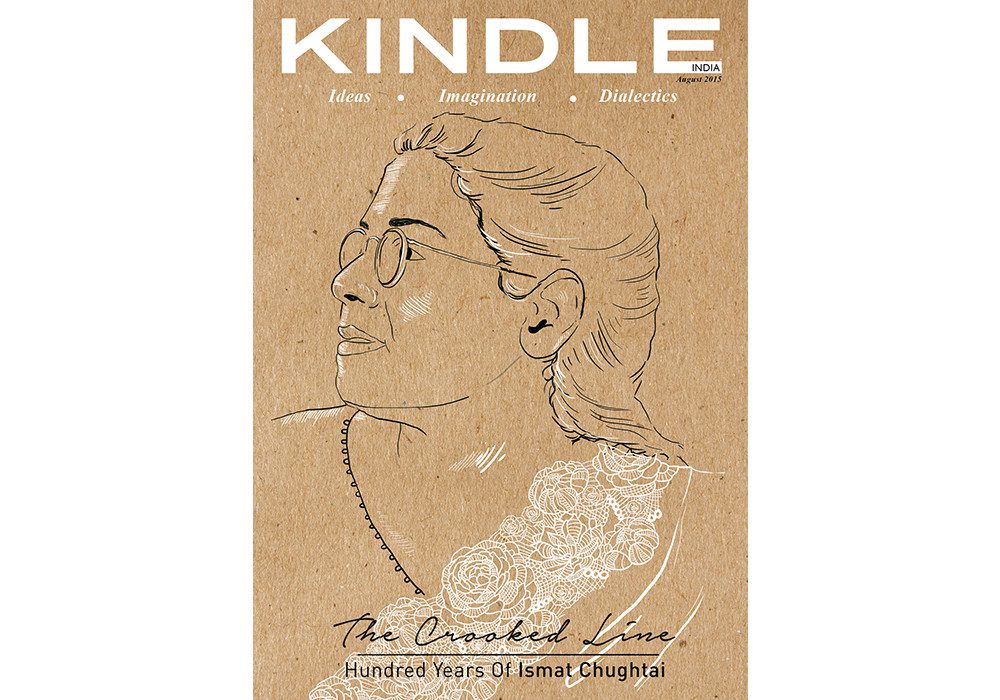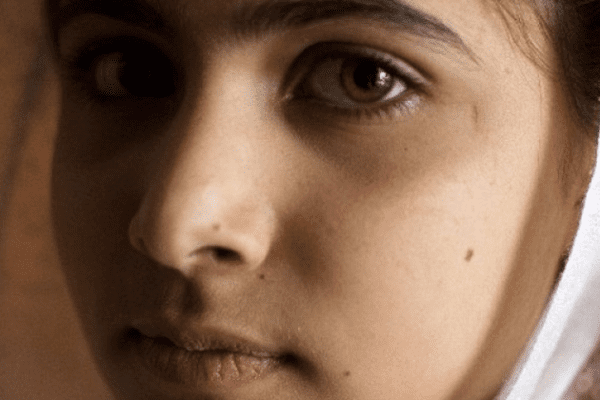Ismat Chughtai can't simply be pigeonholed as a women's writer. To do so is to disregard her frequent espousal of universal human rights, says Dr Rakhshanda Jalil.
Ismat Chughtai, the most provocative and rebellious among women writers in Urdu, wrote voluminously until she was diagnosed with Alzheimer’s disease in 1988. Her formidable body of work comprises several collections of short stories, novels, sketches, plays, reportage, radio plays as well as stories, dialogues and scenarios for the films produced by her husband Shahid Lateef and others. Much of her non-film writing was autobiographical; if not directly related to her own life, it certainly stemmed from her own experiences as a woman, especially a middle-class Muslim woman. Some literary critics, most notably Aziz Ahmed, have viewed this as a flaw rather than strength, objecting to the constant, overwhelming presence of Ismat herself in all that she wrote.
As we celebrate Ismat Chughtai’s centenary year and look at her critically and objectively, it is important also to consider whether and to what extent a writer’s persona overshadows the literary merit of his or her work. For, Ismat is a perfect example of how a politically-aware, socially-engaged writer, one who was actively involved in the once-powerful literary grouping known as the Progressive Writers’ Association, is viewed through the prism of women’s writings.
Regardless of Ismat’s own larger-than-life persona, while it is true that her interest was primarily in women, it is also true that she saw women within a larger social context and not merely within the confines of the zenana. She wrote stories (such as ‘Jadein’) and plays (Dhaani Bankein) on other issues such as communal tensions, issues that did not concern women alone, but issues that can be viewed from a unique perspective because they come from a woman’s pen. The Freudian expression L’écriture féminine acquires an altogether different meaning when Ismat’s writings are seen in their correct perspective.
Regardless of Ismat’s own larger-than-life persona, while it is true that her interest was primarily in women, it is also true that she saw women within a larger social context and not merely within the confines of the zenana.
Like many of her fellow travellers in the progressive writers’ movement, Ismat proved over and over again that she was a progressive more by inclination than indoctrination. We see evidence of this in almost her writings, but never as strongly or as passionately as in one of her essays entitled ‘Communal Violence and Literature’. Making an eloquent plea for art for life’s sake and the role of a writer in times of political turmoil and upheaval, she writes with passion and clarity of the annus horribilis—1947—and why it was not important at a time of great human tragedy to worry unduly about art:
The flood of communal violence came and went with all its evils, but it left a pile of living, dead, and gasping corpses in its wake. It wasn’t only that the country was split in two—bodies and minds were also divided. Moral beliefs were tossed aside and humanity was in shreds. Government officers and clerks along with their chairs, pens and inkpots were distributed like the spoils of war. And whatever remained after this division was laid to waste by the benevolent hands of communal violence. Those whose bodies were whole had hearts that were splintered. Families were torn apart…
At such a time, when “the organisers were standing with their backs turned; the reformers of the nation were dozing somewhere out of sight”, it was the writers, she goes on to say, who picked up everyone’s slack. To quibble over the literary merit of works produced during times of great unrest and to question the preoccupation of the progressives with blood and gore is to diminish the unprecedented scale of the human tragedy that was Partition. She is scathing about a certain tendency among some writers (she mentions M Aslam and Ramanand Sagar) who view this tragedy through the prism of religion and count and categorise the victims under ‘Muslim’ or ‘Hindu’ victims. “Such Hindustanis and Pakistanis,” she goes on to say, “wish to shield with their writing that particular class which, driven by a desire for personal gain, in fact perpetrated and was the real progenitor of the Partition and its ensuing violence. This class is not particular to any one country but rather, except for a few nations, is found everywhere on earth. It commits such acts and looks for similar justifications.”
In a reminiscence entitled ‘Dust of the Caravan’, she remembers the many eccentric members of her extended family—of whom many are dead, others have gone away to Pakistan, still others are lost forever in the hazy mists of the past. She holds the ties of friendship and a shared past over all other bonds as she remembers Soshi, her Hindu friend and neighbour with whom she celebrated Janmashtami and Holi:
I am a Muslim. Idol worship is sacrilegious. But the devmala is part of my homeland’s heritage. Centuries of culture and philosophy are imbued in it. Faith is one thing, the culture of one’s homeland another. I have an equal share in it, just as I have a share in my homeland’s earth, its sunshine and water. Will my faith falter if I splash coloured water on Holi, or light lamps on Diwali? Are my beliefs and my judgments so shallow, so defective that they would be shattered into tiny fragments?
Elsewhere, she recalls the way servants were treated in her childhood and how she developed “an intense hatred for the system that creates servants and masters.” And while servants figure in many of her stories—weak, helpless, lying and cheating—they are certainly no better and no worse than their masters. Once outside the limited world of her family, Ismat writes how she “realised that differences of caste and class were just a sham. Poverty and affluence were everything. A rich person, no matter how virtuous and patriotic he is, treats an impoverished individual like a servant.”
We do a disservice to Ismat by harping on the “passing reference” to certain aspects of human relationships. We do so by disregarding the many other things that did not escape her scrutiny.
The above examples amply illustrate Ismat’s untutored yet deeply held Marxist view of the world. It is, therefore, unfortunate that for many she is a bold and provocative writer, and in more orthodox circles as a purveyor of filth and immorality. While Ismat had always written bold stories that challenged traditional morality and worn-out notions of a woman’s ‘place’ in society, there is little in her writings that can be described as overly ‘sexual’, not even the much-maligned and much-anthologised short story ‘Lihaaf’ (Quilt), for which she was much maligned in her lifetime and which, decades after it was first published, continues to cast a long shadow over both Ismat and her remarkably vast oeuvre.
The noted writer and critic Intezar Husain has drawn an interesting parallel between Ismat and Manto, both of whom were hauled up in a court in Lahore on charges of obscenity: “Where Ismat moves away lightly after making a passing reference to [such] a subject, Manto is like the naughty boy who flings open the door, claps his hands and say, ‘Aha! I have seen you!’” My own sense, reinforced after reading Ismat in dribs and drabs over the years and in a more systematic manner when I embarked upon a study of the progressive writers, is that we do a disservice to Ismat by harping on the “passing reference” to certain aspects of human relationships. We do so by disregarding the many other things that did not escape her scrutiny and to which she makes more than a passing reference—inequality, injustice, exploitation as well as her all-embracing love for Hindustan, its people and culture.
Like the communist-doctor-writer Comrade Rashid Jahan, whom she admired and emulated in many ways, Ismat became a victim of her own persona. In her own lifetime, she was objectified—as a woman writer who wrote on ‘bold’ subjects, one who could be relied upon to shoot off her mouth and be provocative and loquacious and witty but not necessarily one who needed to be taken entirely seriously. Notwithstanding her popularity—or perhaps because of it—literary critics have been chary of giving Ismat the sort of critical attention she has always deserved.
In her own lifetime, she was objectified—as a woman writer who wrote on ‘bold’ subjects, one who could be relied upon to shoot off her mouth and be provocative and loquacious and witty but not necessarily one who needed to be taken entirely seriously.
A spate of new translations of Ismat’s fiction and non-fiction will hopefully redress an old wrong. The new work being done on Ismat, especially in English, shows us Ismat the writer in a new light: as a prose stylist who engaged with all the big debates of her time with passion and clarity of thought. What is more, Ismat can be counted among those writers who are fortunate enough to have a second innings not too long after their first flush of fame. Like Manto, with whom Ismat enjoyed the dubious distinction of sharing the tag of Urdu’s best-known enfant terrible, this second innings have come through a crop of excellent translations into English that allow their work to be accessed by a wider and newer readership. As we witness a revival of interest in Ismat as well as several of her contemporaries, we must pause to take note of the translator’s role in giving a new lease of life to a writer.


